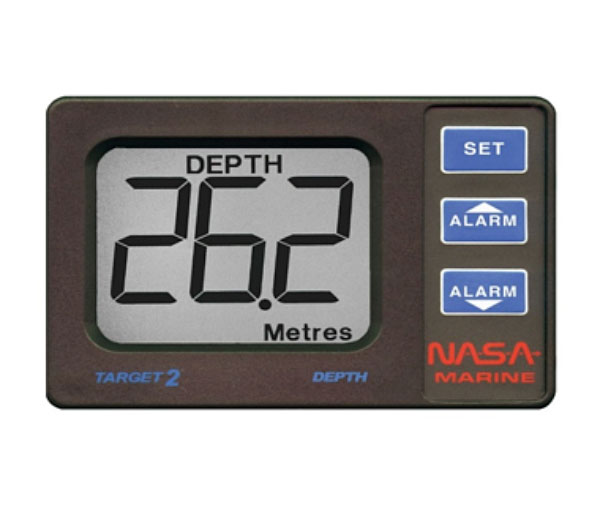An echo sounder is the instrument used to determine the depth of water beneath the keel. In order to do this it transmits pulses of sound which bounce off the sea bed. How does it work?

Principle of the echo sounder. A short pulse of sound vibration is produced at A, reflected by the sea-bed at C, and received at B. The depth d, is proportional to the measured time interval between transmission and reception (courtesy of Kelvin Hughes).
The echo sounder system comprises four components, namely a transmitter, a receiver, a transducer and a display unit. The transmitter creates a short pulse of AC current which it passes to the transducer which is situated at the bottom of the ship. The transducer converts this pulse into sound (like a loudspeaker) which it transmits towards the sea bed. When it reaches the sea bed, this pulse is reflected back to the transducer which now acts like a microphone and converts it back into an electrical current. This is then passed to the receiver where it is amplified and converted into a useable format and displayed on the display unit. In the receiver there is also a very accurate timing device which measures the time taken between transmission of the pulse and reception of the echo. Since the speed of sound in water is known (approx 150 metres per second) the receiver can now calculate the depth of water between the transducer and the sea bed and this is what is displayed to the operator.

Basic diagram of the components of an echo sounder.
The display unit can be one of the following:
- Digital display. Here the depth is displayed digitally (in figures) in metres.

Digital echo sounder display.
- Paper Recorders. With a paper recorder a mark is burned on a roll of paper indicating the depth at regular intervals. With this display a chart of the bottom is produced.

Paper recorder.
- Video Display. With this display a similar picture is produced as that of the paper recorder. One can either have it in monochrome (shades of one colour) or in full colour. The colour option allows the operator to determine the nature of the bottom.

Video type echo sounder display.
Except on digital displays, various range scales can be displayed, ie 0 to 10 metres, 0 to 20 metres, etc. Echo sounders usually operate in the 10 to 55 Khz frequency range. The human ear can only hear sound in the 8 Hz to 18 Khz range. The echo sounder frequency range is therefore referred to as ultra sonic.


